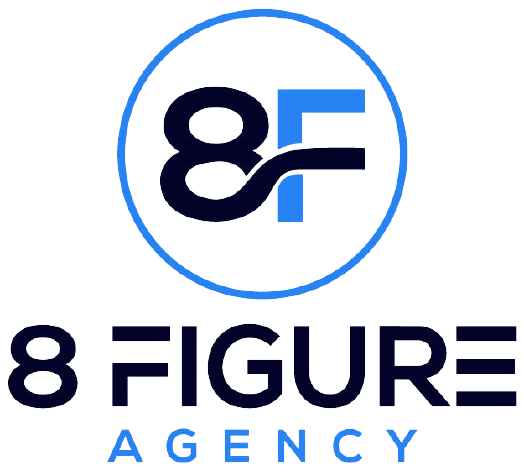Effective management ensures that tasks are completed efficiently, team members are motivated and engaged, and the organization operates smoothly.
The performance management model is essential because it not only helps companies achieve short-term goals but also fosters a culture of continuous quality improvement, skill enhancement, and employee satisfaction.
One model we believe can significantly assist in effective team management and performance management is the 8 Figure Agency‘s Management House Model. This model offers a comprehensive framework for understanding and implementing effective management practices.
Elevate Your Team Management
Dive into the Management House Model and lead your team to unparalleled success with 8 Figure Agency
Understanding the Management House Model
The increasingly popular Management House Model, developed by the 8 Figure Agency team is a comprehensive framework designed to help organizations and managers understand and improve their managerial practices.
Foundation: Vision and Strategy
At the base of the model is the foundation, which symbolizes the organization’s vision, mission, and strategic objectives over periodic intervals. We suggest 3 months, 6 months, and 12 months.
This element provides the overarching purpose and direction that guides the organization’s new ideas and activities. A clear and compelling vision helps align and manage the team’s, new skills, efforts, and decisions, ensuring that everyone is working towards common goals.
The Bricks/Walls: Implementation and Execution
This is the building stage and represents the organizational structure, processes, and systems that support the day-to-day operations. This element emphasizes the importance of having efficient workflows, well-defined roles and responsibilities, and streamlined processes. A strong structure and effective systems facilitate smooth operations and communication within the team.
The Cement: Culture, Values, Leadership and Management
This stage highlights the shared values, beliefs, and organizational culture that shape and influence the behavior and attitudes of customers and team members. It also recognizes that the leadership style employed by managers greatly influences the team’s motivation, engagement, and performance.
A positive culture with effective leadership and managing practices promotes collaboration, innovation, and a sense of belonging. But it also emphasizes the importance and practice of adaptive leadership that can cater to various situations and individuals, fostering a conducive work environment.
Roof: Results and Performance
The roof of the house model represents the outcomes and results of effective house management. It reflects the successful implementation of the other elements and underscores the importance of ongoing training, education, skill enhancement, and personal growth for both managers and team members.
The roof emphasizes the measurement and evaluation of the team’s achievements against the organization’s goals. It serves as a reminder that all managerial efforts are ultimately geared towards producing positive results.
Building the Foundation: Goal Setting
Setting clear and specific goals is a fundamental aspect of effective management and performance improvement. Goals provide direction, focus, and a sense of purpose for individuals and teams within an organization.
Importance of Setting Clear and Specific Goals
Clear goals provide employees with a sense of purpose and a precise understanding of what is expected of them. It becomes easier to measure progress and assess performance and ensures that everyone is working towards the same prioritized goals.
The SMART Goal Framework
The SMART goal framework is a widely used approach for creating effective and actionable goals. SMART stands for Specific, Measurable, Achievable, Relevant, and Time-bound.
- Specific: Goals should be clear and specific, leaving no room for ambiguity. A specific business goal answers the question: What needs to be accomplished? Why is it important?
- Measurable: Goals for projects should be quantifiable so that progress can be tracked and evaluated objectively. This involves identifying key metrics or indicators to measure success.
- Achievable: Goals should be realistic and attainable. While they can be challenging, they should not be so unrealistic that they demotivate or discourage individuals.
- Relevant: Goals should be relevant to the individual’s role and responsibilities, as well as aligned with the team and organization’s objectives. This ensures that efforts are well-directed and contribute to overall success.
- Time-bound: Goals should have a specific timeframe or deadline for completion. This creates a sense of urgency and prevents procrastination.
How To Align Individual Goals With Organizational Goals
Managers should communicate the organization’s goals and strategy to their team members in a way that breaks down high-level organizational goals into departmental or individual goals. You should ensure that your team is also involved in the goal-setting process and ensure regular reviews and feedback are a two-way street.
Strengthening the Walls: Planning & Organizing
Effective planning and organizing lay the groundwork for turning goals and strategies into actionable steps and ensuring that resources are utilized efficiently.
Developing Action Plans to Achieve Goals
You can develop action plans by first, dividing larger goals into smaller, manageable tasks. This makes the goals more achievable and provides a clear roadmap for implementation.
Then, by determining which tasks are most critical and need to be completed first you can prioritize high-impact activities. This prevents overwhelming the team and ensures that resources are directed to priority tasks.
The next step is to assign tasks to specific groups of team members based on their skills and expertise. Everyone should know what they are accountable for.
You should of course follow this up by establishing realistic deadlines for each task and finalizing the resources (financial, human, technological, creative change, etc.) required for each task. This helps create a sense of urgency and prevent procrastination while ensuring that necessary resources are available when needed.
Organizing Resources to Support Goal Attainment
Resources are important for managing your team, especially during a change process. Here are a few that you need to manage:
- Human Resources: Ensure that the right people with the right skills and abilities are assigned to tasks. Distribute workloads evenly and consider team members’ strengths.
- Financial Resources: Allocate budgets to different aspects of the plan. Monitor expenditures to determine how to stay within budget and reallocate resources if necessary.
- Technological Resources: Utilize technology and tools that can enhance efficiency and streamline processes. This might include project managing software, communication platforms, and data analytics tools.
- Physical Resources: Ensure that physical resources like equipment, office space, and materials are available and well-maintained.
- Information Resources: Provide access to the necessary information, services, and data that team members need to execute their tasks effectively.
- Communication: Establish clear communication channels to keep team members informed about progress, changes, and any challenges that may arise.
Beautifying the Rooms: Motivating & Leading
Effective motivation and leadership can inspire team members, boost morale, promote them, and drive them to achieve their best potential.
How to Effectively Motivate and Lead a Team
This can be achieved by communicating the organization’s goals, expectations, and the importance of each team member’s role. Delegate responsibility and decision-making to team members whenever possible to empower them.
When development and milestones are reached you should acknowledge and appreciate the efforts and achievements of the team members. Incentives and rewards will ensure that this commitment to the work is maintained or future challenging tasks are met or overcome with fervor.
Understanding Different Motivational Theories
Motivation theory studies the understanding of what drives a person to work towards a particular goal or outcome. Let’s explore a few of them.
- Maslow’s Hierarchy of Needs suggests that individuals are motivated by fulfilling a hierarchy of needs, starting from basic physiological needs to higher-level needs such as self-esteem and the desire for self-actualization.
- Herzberg’s Two-Factor Theory proposed that feelings of job satisfaction and dissatisfaction arise from different factors. Motivators in life (like recognition and personal growth) contribute to job satisfaction, while hygiene factors (like salary and working conditions) prevent workplace dissatisfaction.
- Expectancy Theory states that individuals are motivated to act in a certain way based on their belief that their efforts will lead to a desired outcome. It incorporates the concepts and ideas of expectancy, instrumentality, value, and the concept of valence.
Leadership Styles and Adapting to Your Team
Adapting leadership styles involves understanding your team’s needs, the situation at hand, and your strengths. Effective leaders often use a combination of styles based on the context and the groups of individuals they are leading.
- Autocratic leadership shows the leader making decisions without involving the team. It’s useful when quick decisions are needed, but it can lead to reduced morale and creativity if overused.
- Democratic leadership involves team members in decision-making. It fosters collaboration and creativity but can be time-consuming and these methods may not work well in urgent situations.
- Transformational leadership inspires and motivates teams to achieve exceptional results. They lead by example and often cultivate strong emotional connections with their team.
- Transactional leadership focuses on clear task delegation, performance expectations, and reward systems. This style is effective for achieving specific goals and maintaining discipline.
- Servant leadership prioritizes the well-being and growth of their team members. They focus on serving the team’s needs and fostering a supportive environment.
- Laissez-faire leadership allows team members to make decisions independently. While it generally encourages autonomy, it might lead to a lack of direction and coordination.
Keeping the Roof Strong: Controlling & Evaluating
These processes ensure that the organization is progressing toward its goals, that resources are optimized, and that actions align with the desired outcomes.
Developing Systems for Measuring Progress
It’s possible to measure progress among each milestone using scope time cost measure during business process management. To guarantee better tracking you may start by identifying relevant KPIs that directly measure progress toward goals. KPIs can be quantitative or qualitative, depending on the nature of the goal.
You should then define specific metrics and benchmarks that indicate success and implement systems to collect relevant data and information. These metrics should be easily measurable and comparable over time.
By establishing a reporting schedule to regularly review and analyze the collected data you will be able to highlight both successes and areas that need improvement.
Conducting Effective Evaluations and Providing Feedback
Being able to conduct effective evaluations and provide feedback requires you to clearly define the criteria for evaluating performance or outcomes. This ensures objectivity and consistency in evaluations.
You should ensure that the feedback comes from multiple sources, including peers, subordinates, and supervisors; is timely and specific. This provides a holistic view of an individual’s performance, allows for immediate adjustments, and highlights strengths and weaknesses.
For best results, you should strive to have an open and safe space for individuals to express their opinions and concerns, and to be able to collaboratively goal set. All of these will culminate in growing and developing a high-performing team.
Implementing the Management House Model
Implementing the Management House Model in your organization involves a systematic approach to aligning various house model components for better performance and results.
You should of course start by first familiarizing yourself and your team with the Management House Model’s key business elements with an understanding of the current state of your organization in terms of each element.
By breaking down each element into actionable steps and tasks you will then be able to assign responsibilities, set timelines, and allocate resources accordingly. This allows you to align your organization’s vision, mission, and goals with the Model’s foundation.
With excellent communication of the plan implementing it will be significantly easier, especially if you collect feedback and progress evaluation along the way.
Common Challenges and How to Overcome Them
Implementing a new model can meet resistance. To overcome this, involve team members in the process, explain the benefits, and address concerns.
Limited resources can also hinder implementation. This can also be circumvented by prioritizing elements and focusing on areas that need immediate attention first.
Most of all inadequate communication can lead to misunderstandings. To mitigate this you should ensure that information about the Model and its implementation is consistently communicated across the company at all levels.
Conclusion
Effective management provides the foundation upon which performance management can thrive. While managing sets the stage by creating a conducive environment, setting goals, and managing resources, performance management focuses on individual and team performance, aligning them with the organization’s goals. Together, these practices ensure that the organization operates efficiently, achieves its objectives, and maintains a motivated and productive workforce.
It might seem overwhelming but 8 Figure Agency is right here waiting to help you get started. We are here to guide you on your journey to effective management and performance optimization. Our team at 8 Figure Agency understands the intricacies of managing and enhancing performance within organizations so you can scale your agency to 8 figures and beyond!
Don’t hesitate to reach out and take the first step towards a more efficient, goal-oriented, and thriving organization.



















































